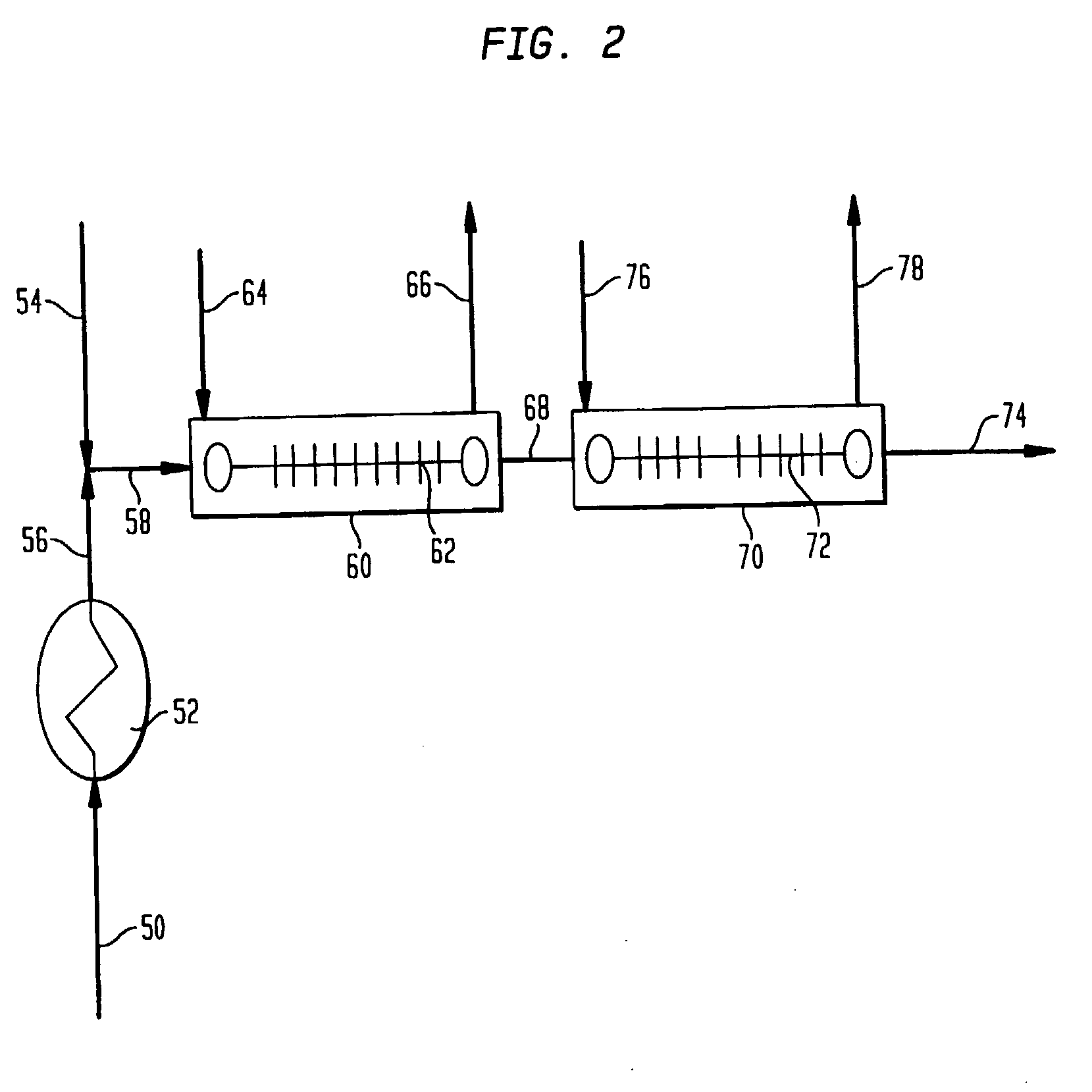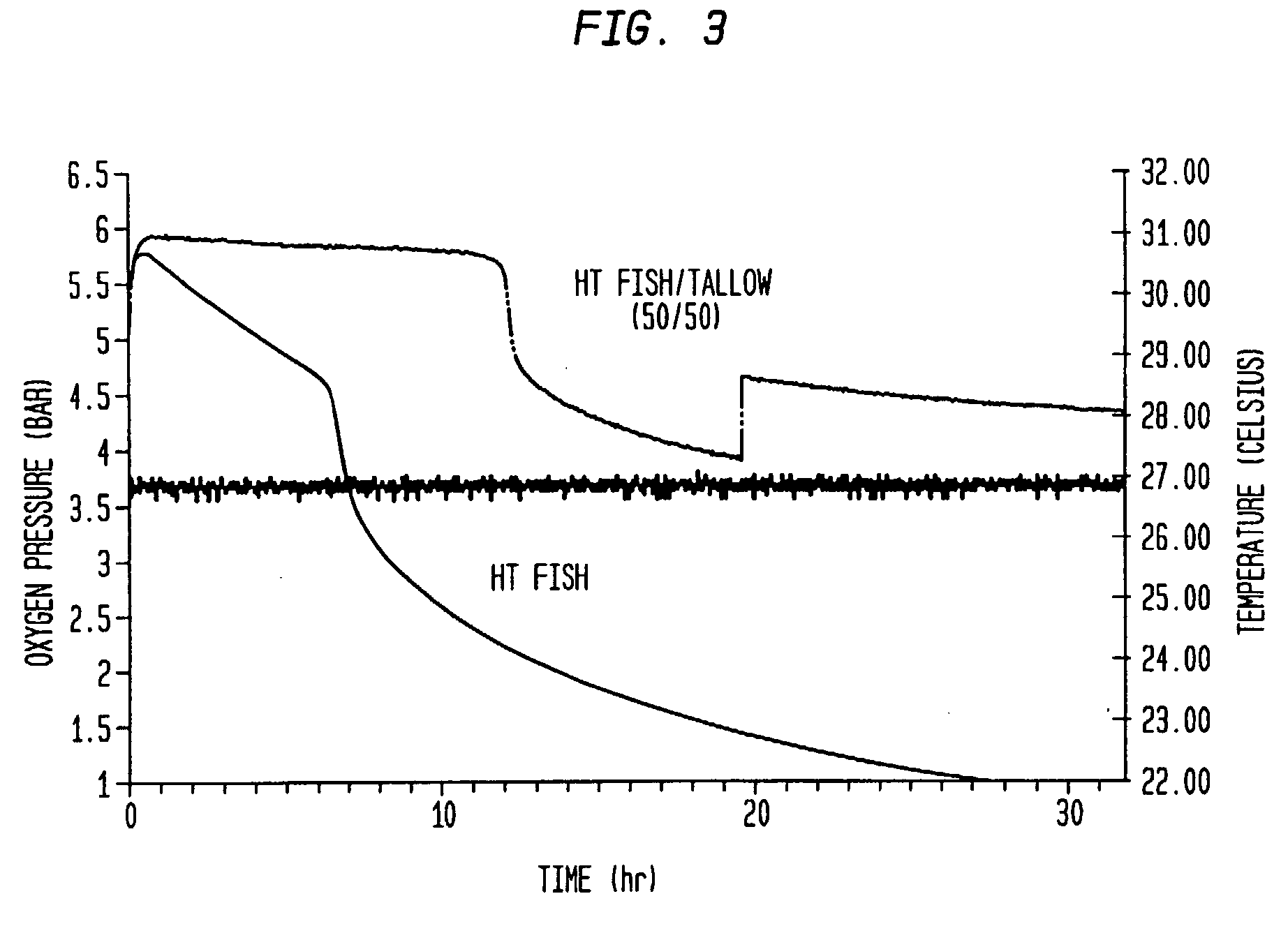Polyunsaturated fatty acid monovalent and divalent metal salt synthesis
a technology of monovalent and divalent metal salts and polyunsaturated fatty acids, which is applied in the direction of biocide, drug composition, metabolic disorder, etc., can solve the problems of inability to readily react with unsaturated fatty acids, material also lacks storage stability, and the storage stability of saponified unsaturated fatty acids can be significantly improved. , the effect of improving the shelf life and storage stability of the finished produ
- Summary
- Abstract
- Description
- Claims
- Application Information
AI Technical Summary
Benefits of technology
Problems solved by technology
Method used
Image
Examples
example 1
[0114]In this example, 300 grams of soy oil was charged to a vessel. The soy oil was then heated to 50° C. After the oil reached 50° C., 45 grams of magnesium hydroxide was added and thoroughly blended. The blend was then heated until the temperature rose to 285° C., at which point the saponification reaction occurred and the temperature rose to 290° C. The reacted material was removed from the vessel and placed in flat pan for cooling. After cooling, the material processed into small granules of a dry, free-flowing magnesium salt.
example 2
[0115]A blend of 50% by weight of fish oil and 50% by weight of tallow was prepared. The blend was then saponified under ambient pressure and atmosphere at a temperature range between about 246° C. to about 260° C. with Ca(OH)2 added at a ratio of 20% by weight of the oil / fat to produce calcium salts. The resulting salts were ground to a free-flowing material, which was then bagged and placed in an environmental chamber. The bagged material was held in the environmental chamber at a temperature ranging from about 41° C. to about 43° C.
[0116]None of the stored material developed an elevated temperature, which indicates that no auto-oxidation occurred. The material was then sampled and analyzed with the following results:
Time (days)Free FatEPADHA01.24%5.7%6.8%280.90%5.5%6.8%421.17%5.4%6.6%672.25%5.4%6.5%02.25%4.4%5.1%282.05%4.3%5.2%420.85%4.3%5.2%
example 3
[0117]A blend of 50% by weight of fish oil and 50% by weight of soy oil was prepared and saponified as in Example 2. The salts were then ground to free flowing material, bagged and placed in the environmental chamber as described in Example 2.
[0118]None of the stored material developed an elevated temperature, which indicates that no auto-oxidation occurred. The material was then sampled and analyzed with the following results:
Time (days)Free FatEPADHA02.23%4.3%5.1%280.85%4.3%5.2%422.65%4.2%5.1%
PUM
| Property | Measurement | Unit |
|---|---|---|
| temperature | aaaaa | aaaaa |
| temperature | aaaaa | aaaaa |
| temperature | aaaaa | aaaaa |
Abstract
Description
Claims
Application Information
 Login to View More
Login to View More - R&D
- Intellectual Property
- Life Sciences
- Materials
- Tech Scout
- Unparalleled Data Quality
- Higher Quality Content
- 60% Fewer Hallucinations
Browse by: Latest US Patents, China's latest patents, Technical Efficacy Thesaurus, Application Domain, Technology Topic, Popular Technical Reports.
© 2025 PatSnap. All rights reserved.Legal|Privacy policy|Modern Slavery Act Transparency Statement|Sitemap|About US| Contact US: help@patsnap.com



